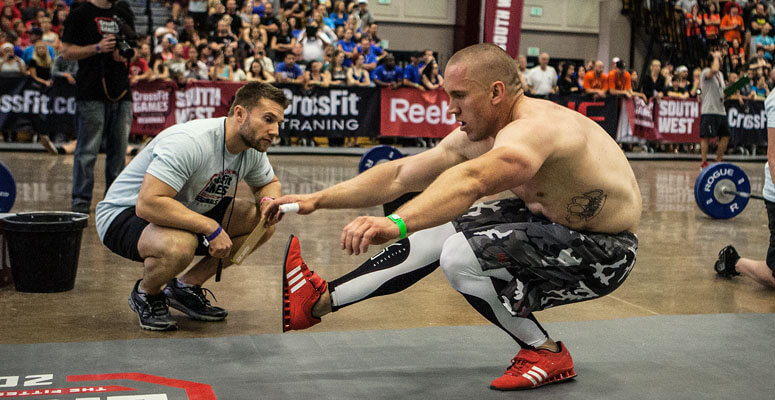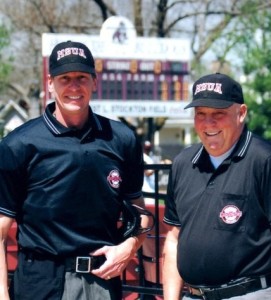
Yesterday I engaged in an interesting discussion about CrossFit judging, it’s impact on the Games and how it can be better. The discussion actually began about a particular top female athlete and her squat depth (or lack thereof) during the competition. Most online (read FaceBook) opinions usually regress to name calling, everyone claiming to be an expert, to name calling and then name calling. This one was different. Probably because of those involved. Primarily myself and Coach Aaron Martin of CrossFit Vector/Nashville Barbell have a mutual respect for one another so, we didn’t call each other names as often as most would. At any rate, after the discussion, my fellow coach and business partner Greg Boyd recommended that I put my perspective (and opinions) down on paper. So, here I am.
One of the things that I dislike about internet experts is that they will usually give you their resume as a way of validating their opinions. While that makes sense, typically the resume and the opinion don’t really match up. As an example, I’m a professional firefighter and the price of tea in China should be 2 yen because I say so and I’m the expert. You get the drift. So, having said all of that I’m not going to lay out my life’s resume. But, I do want you to know a little of my experiences so that you can see my perspective.
I am a coach and Co-Owner at CrossFit Combustion in Spring Hill, TN. I love being a coach. I hope that I am a good coach. I work extremely hard at it. The gym has invested thousands of dollars so that myself and my partner can learn from the best Olympic, weightlifting, mobility and CrossFit coaches in the country. But, coaching and competing in CrossFit only forms a portion of my perspective as it relates to the judging at the Games.
I have about 15 years of experience as a baseball umpire. Between 2007 and 2013 I worked in Division 1 college baseball all over the southeastern U.S. I want you to notice something. I am not holding myself up as THE top expert in the world but I do have more training than most people when it comes to sports officiating. To say that I learned a ton working in baseball would be an understatement. I always tried to work with guys that had been further and worked bigger games than I had. I wanted to know what they knew. I was a pretty good Division 1 umpire and a very good small college umpire. Over the years (and many camps) I learned positioning, concentration on a whole other level, angles, dealing with conflict, how to lock-in, investing in my profession and on and on. The learning never stopped and the lessons never stopped. Two years ago I tried to work 3 jobs that I take very seriously. Those were as a professional firefighter, a gym co-owner/coach and a baseball umpire. What I found was that I excelled at none of them. It was just too much. It wasn’t fair to my family, the game, my business partner or myself. I demand excellence from myself and it was not possible to deliver that while being stretched so thin. So, in 2013 I made the very difficult decision to end my umpiring career while I still had a lot of upward mobility in my future. BUT, I have forgotten none of what I learned.
When I watch The CrossFit Games, I can’t help but see the judges and the athletes from an umpire’s perspective. I want to be crystal clear about the things that I am about to say. This has NOTHING to do with being critical of the judges. ZERO. Because I see them all using the same “mechanics”, I know someone is teaching them what to do. Here is the problem, whoever is teaching them does not have a sports official’s background. It’s painfully obvious.
This is the primary problem with judging in CrossFit:
We have a professional sport with volunteer, amateur judges.
The athletes train CrossFit full time. More and more are making a living as a paid, professional athlete. I think it’s great. I love to see handwork pay off for people. However, the judges can’t possibly keep up with the skill level of the athletes. Full time athlete vs. little to no sports officiating training. It won’t work. It doesn’t work. After the Games the judge goes back to his or her home box and continues on with life. They will think about the Games again months or a year down the road. No follow up training. No camps. No local mentors. This is what leads to the very broad INTERPRETATION or BAD JUDGEMENT of movement standards (remember that top female athlete and her squat depth?). If I have made some incorrect ASSumptions here and someone has direct personal knowledge that I’m wrong, please share that with me.
Now that we’ve laid all of that out I want to hit on some specific issues that I see with the judging. I will also plug some possible fixes for these issues. I’m sure there are more issues and other ideas about how to fix any and all but, these are what I’ve come up with for the time being. Maybe I will edit and update as we go along.

Issues with judging:
1. They are too close to the athletes.
Most people will think this is counterintuitive. I can understand but, it makes perfect sense if you consider it a different way. In umpiring baseball, the rule of thumb is “angle over distance”. That is a) prioritizing angle over distance b)the unspoken part of that is “don’t get too close or the play blows up on you”. Think about the routine safe/out play at first base. The next time you watch a big league game, notice how far away the first base umpire is from the play. That is intentional. Believe me, if he wanted to be standing right next to the bag when the runner and the ball arrived, he could be. But, he won’t do that because it doesn’t work. For CrossFit, logistically speaking, this one is hard to fix. You only have so many heats and so many lanes. Should The Games skip a lane for judges? More heats? I’m not sure about how to implement it but, what we currently have is judges that can’t possibly see a movement at the top and the bottom (I’ll talk about their head bobbing in a second) because they are too close and they are MISSING the calls (again, not the judges fault, they are following the boss’ protocol). Other than professional training, this might be the most important flaw currently.
2. Head bobbing doesn’t work.
If you don’t know what I mean by head bobbing. That’s my way of describing this funky moving of the head they are using to see the top and bottom of a movement like a GHD sit up or a thruster. He’s looking to see that the athlete is locked out up top and getting depth in the bottom. In NO OTHER SPORT will you see an official doing this for a “better view”. For one it looks amateurish. Secondly, it relates to being too close to the play. This goes away if we move them back from the athlete.
3. They have no “lock in” mechanism.
Your head is your camera. When you move your head, you distort what you are seeing to some extent. To add to the difficulty here, you are trying to see a precise moment of a fast moving object or athlete. Notice a baseball umpire working home plate. Watch what he’s doing with his hands or forearms. He is locking in so that his head and torso will remain as still as possible through the play (pitch). If anything needs to move, it’s the eyes only. The first base umpire is the same way. He will lock in with hands on knees often. This is considered as fundamental as it gets. This of course relates back to stopping the head bobbing. Your head is your camera and we need to get the judges still so they can truly see what they think they are seeing.
4. More off season training.
There are a lot of ways to skin this cat. In baseball, the local association (in my case covering Middle TN and KY) holds an annual camp to train and evaluate judges/officials either for hiring, promotion or retainment. That coupled with webinars, online training, self study, etc usually has the umpire where he needs to be. Here is where you teach mechanics, angle, timing and the like. There is no reason the same system can’t work for CrossFit for both Regionals and The Games.
5. Organization to facilitate training.
I’m about to spend some of HQ’s money. The U.S. is broken up in to regions. Each region has a V.P. of officials (paid well by the NCAA or in this case HQ). Within the region, area associations are allowed to form under the supervision of the association’s President. This would be a long time official that will be ultimately responsible for the recruitment, training and performance of the judge. The judge is essentially an independent contractor responsible for paying his or her expenses, camps, etc. But, upon her rendering service, she gets paid for judging Regionals or the CrossFit Games.
I’m sure there are many others with good ideas that go with this. I don’t see it as a huge, show stopping issue today but, eventually, it will be. Someone is going to screw something up so badly that it will decide a winner and loser. You want to do everything in your power, as a sport, to minimize that possibility. As prize money and sponsorship opportunities increase, the athletes will begin to demand better. For one, they will figure out which judge they can get away with a little lack of depth here or less lock out there and the athlete will exploit it in the name of winning. Additionally, they will eventually start raising hell when they are no-repped for what seemed to be a good rep. Right now, the CrossFit way is, you don’t complain. But, when more profit enters, that approach will end.
You have a professional sport. It’s time to bring the officiating along with it.

Great article Matt, you make some great points that really need to be addressed by HQ in the coming years.